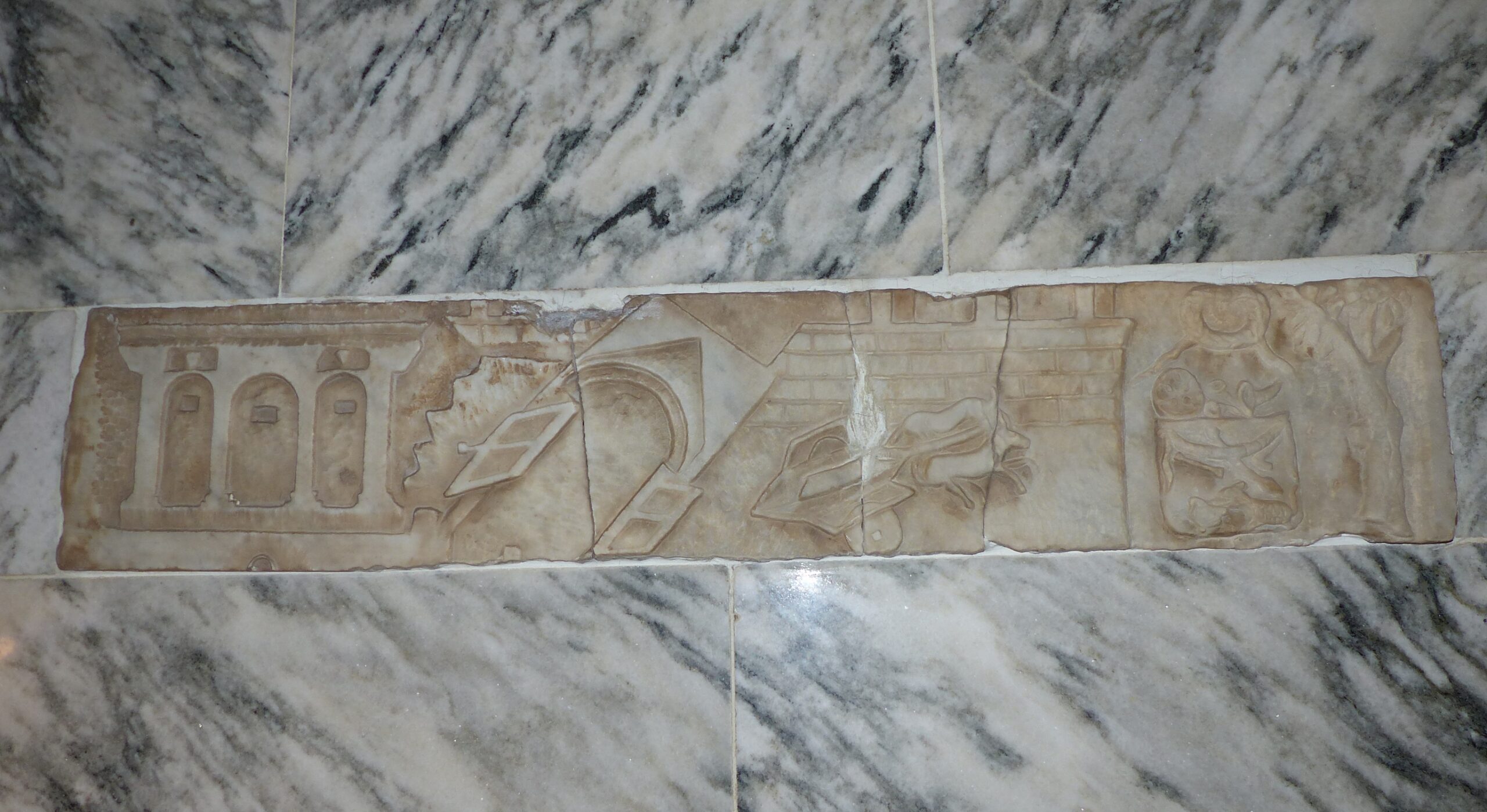An important marble relief depicting the earthquake of 62 A.D. that was stolen from Pompeii in 1975 has been found in affixed to the wall of a stairwell in a home in Herzele, Belgium. The strip of marble depicts the city in the grip of the earthquake, one of its gates captured in the moment it sheers off the defensive walls and collapses.
The homeowner, 85-year-old Raphaël De Temmerman, bought the relief under circumstances that were almost comically shady during a trip to Italy in 1975. He was visiting Pompeii with his little boy Geert when they were approached by a man carrying something heavy in a burlap bag. He showed them the contents — a marble slab — and asked them for money. A quick exchange of cash for goods, and the seller turned tail and ran away as fast as his legs could carry him.
De Temmerman took his “souvenir” home and added it to the new gray marble cladding on the staircase wall, a renovation inspired by Pompeii and ancient Rome. Only when he planned his move to an apartment earlier this year did he have the relief examined for appraisal and authentication. Experts from the Gallo-Roman museum in Tongeren confirmed it was authentic, but refused Temmerman’s offer to sell it to them. The day after, the judicial police came by with a search warrant.
De Temmerman finally learned the background of the piece from the documents left by the police. The marble relief had been stolen on July 14th, 1975, from the house of banker L. Caecilius Iucundus where it originally hung above the atrium altar.
“A fair amount is known about how the item was stolen at the time,” says Bart Demarsin of the Gallo-Roman Museum. He is one of the people who went to see the stone in Herzele and has no doubt that the piece is real: “It closely corresponds to the original piece that we recognise from the photos”.
The marble stone in question features a scene from the Pompeii earthquake in CE 62. “That piece corresponds to a similar piece, which also depicts buildings that collapsed during that earthquake,” Demarsin adds. The pieces originally came from the home of a wealthy Roman banker in the centre of Pompeii.
Both pieces were removed from the residence and had been on display at the site for a long time. Today the first piece is still on display in Pompeii’s museum, the other was stolen in the 1970s, and has now turned up in the house in Herzele.
Naturally Italy wants the relief back. Technically they would have to carry out an investigation to prove the theft and illicit transfer of the artifact to Belgian authorities before they can lodge an official claim, but experts from Pompeii are planning to view the relief to confirm for themselves whether it’s the long-lost original, and it’s likely Belgium will return it at that time.
Meanwhile, the De Temmermans want compensation for the looted object they bought out of a burlap sack on the street from a guy who fled the scene and are considering getting a lawyer to advocate for their interests. Their argument is that at least they kept the looted object safe for five decades after buying it and exporting it in violation of several Italian laws.
“The judicial police told us we might still be able to get compensation, because after all, the piece hung here for 50 years without anything happening to it. It could so easily have been sold on or broken.”
This news video shows the relief embedded in the marble wall of the stairs going down to the basement.

So after being caught in possession of stolen property he wants to be compensated? He’s apparently got a brass neck too . . .
He’s had nearly 50 years to come up with a story that makes him look less like an absolute idiot or knowing purchaser of clearly illicit goods and thats his best!?
He should willingly give it back and do his best to avoid prosecution.
Happy holidays everyone 🥳
Compensation? Hah! Throw his sorry asinus in jail and make him bear all expenses incurred in repatriating the looted piece to Italy.
Actually compensation makes sense; the family of an American soldier who looted valuable objects from Quendlinburg during world war II received millions of dollars in compensation for returning the objects in 1990. Crime does pay.
Quedlinburg. Wasn’t that the site of a Nazi shrine, frequently visited by Himmler and senior SS? Mmmkay.
Really. Buying stolen goods knowingly or unknowingly is a criminal offense in Belgium. Good luck with that Temmermanses from Herzele. Now the story is out, the object will be confiscated and repatriated without much ado I guess. They may be lucky not to be charged instead if they play it a bit fairly.
Have people no shame? To purchase and abscond with a portion of Pompeii and then decorate your home with it! I’m thinking an amount is owing multiplied by the number of years the piece was unaccounted for. Ok twist my arm and lets also include some time in the pillory as it might set a good example 😉